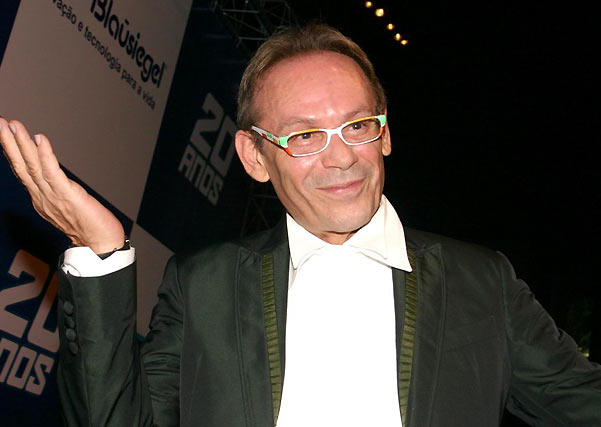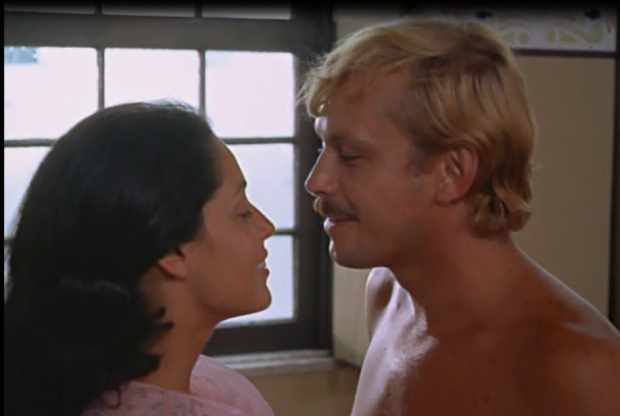So Alike, Yet So Different
At the time of its 1919 premiere in Vienna, Richard Strauss’ Die Frau ohne Schatten, or “The Woman Without a Shadow,” was already being labeled as one of the most demanding large-scale works of the early 20th century: demanding not only in its orchestral and vocal scoring, but in the ultra-fantastical scenic and staging requirements as well.
By the outbreak of hostilities in 1914 (what we now refer to as World War I) and its painful aftermath five years later, Strauss and his librettist Hugo von Hofmannsthal had completed two prize-worthy efforts, Der Rosenkavalier and Ariadne auf Naxos. But even before the above projects reached full fruition, Strauss had hinted to Hofmannsthal, in a letter dated March 20, 1911, at a “subject for a fantasy play,” something approaching “a magical fairy tale in which two men and two women confront each other… the one woman is of fairy origin, the other earthly, a bizarre woman with a very good soul at heart… the whole thing very colorful, palace and hovel, priests, ships, torches, pathways through the living rock, choruses, children…”
Strauss anticipated a kindred relationship for this new work to Wolfgang Amadeus Mozart’s The Magic Flute, just as Der Rosenkavalier had to the same composer’s The Marriage of Figaro, “that is, there is no question of imitation in either case, but there is a certain analogy. The enchanting naïveté of many of the scenes in The Magic Flute is of course unattainable, but I think the idea is a very good and promising one.”
With Hofmannsthal happily going about his business under the pretext that “it would be a crime to hurry, to force the pace of such a subject,” it would take another three years before the libretto of Act I reached Strauss for his seal of approval. Elated, the bourgeois-minded composer returned the favor by providing a score that was (in his not-so-humble estimation) “more beautiful or better made” than anything he had written before, adding: “I hope my music will be worthy of your beautiful poetry.”
This obvious stroking of egos had the desired effect of nudging Hofmannsthal along. Even in the best of times, the poet was a sickly individual who would regrettably die a premature death. Yet he knew himself better than anyone, and was fully cognizant of his literary skills: “If I had a composer who was less famous but… more closely akin to me in spirit, I should certainly be happier.” Pass the butter, please!
In any event, the link between Die Frau and The Flute is a valid one that holds up well under scrutiny. The two royal couples in Strauss — the Emperor and the Empress — are analogous to Tamino and Pamina in Mozart, while their earthly counterparts — Barak the Dyer and the Dyer’s Wife — are dead ringers for Papageno and Papagena, if without their charm and exuberance.
Moving on to the other characters, there’s the Nurse in Frau, who in this context can be “favorably” contrasted with the notorious Queen of the Night; the Spirit Messenger and The Magic Flute equivalent of the Speaker; the Two Watchmen in Strauss with Mozart’s Two Armored Men; and, of course, the most obvious association in the unseen Spirit King, Keikobad (whose theme both begins and ends the opera), with the wise ruler of the Flute’s realm, Sarastro.
Shadow of a Doubt
As for the plot, there is really no comparison: Die Frau ohne Schatten is more intricate, and infinitely more complex, than anything in the Mozart canon. This is not to say that Wolfgang was a ninny or that Strauss was his intellectual superior, not by any means. Quite the contrary, there are relatively few composers, alive or otherwise, who could match Mozart’s compositional skill and insight into human behavior.
No, what Strauss and Hofmannsthal did was to expand Mozart and Schikaneder’s “magic opera” tale, to encompass what literary critic Hans Mayer once described as a “parable of the survival of mankind.” Heady stuff indeed, coming as it did not three years before T.S. Elliott’s 1922 long poem The Waste Land, which looked at the bleakness of postwar Europe with nothing less than disillusionment and despair.
What Strauss offered instead was a way out of the fog: “We artists must try to keep our eyes open to the beautiful and the sublime on every side and place ourselves at the service of truth,” he wrote, “which will in the end, as surely as light pierces darkness, penetrate the dense web of lies and deceit into which the deluded world seems to have spun itself for the present.”
He endeavored to say, too, that the family unit should remain the center of one’s universe. In the opera, this family unit — that ability to perpetuate oneself — is symbolized by the presence (or lack) of a shadow. The fairy spirit Empress, who in human form casts no shadow and, therefore, cannot bear children, is charged by her father Keikobad to obtain a shadow within the next three days. Her Nurse will aid and abet her in this objective through trickery and deception, if need be. If the Empress fails in her task, her husband (the Emperor) will turn to stone. That’s as simple an abbreviation of the story as one can get.
The gist, then, of the opera’s theme is taken up by the Night Watchmen, in their hymn of praise to marriage and parenthood that closes Act I: “Married folk, lovingly lying in each other’s arms, / you are the bridges spanning the chasm over which the dead find the way back to life. / Blessed be the work of your love!”
Miles Kastendieck, of the New York Journal-American, in his review of Die Frau ohne Schatten’s maiden appearance on October 22, 1966 at the newly inaugurated Metropolitan Opera House at Lincoln Center, argued that a case might be made for the work’s being called “the most pretentious opera in history.” I couldn’t agree more! But that assessment would “violate the essence of Strauss” who “reached out to clothe it with penetrating understanding.”
“Understanding” was what the old Robert O’Hearn/Nathaniel Merrill production succeeded in doing. The cast members assembled for that spectacular run, to include the unforgettable team of Leonie Rysanek, Christa Ludwig, Walter Berry, James King, Irene Dalis and William Dooley, and conducted by Karl Böhm (who knew Strauss personally), were perfect for the time and ideal in almost every way. The Met’s newest representation of the work, conceived and directed by the late Herbert Wernicke, debuted in 2001. It was revived in 2003, but laid fallow for nearly a decade, until now. I was fortunate to hear the prerecorded performance from November 26, 2013, on the Saturday broadcast of February 15, 2014.
For once, this longish opera was given note complete, which is quite a change from its Met premiere in 1966 when Die Frau was cut to ribbons. This splendid revival was surely one of the company’s crowning achievements. It starred debuting soprano Anne Schwanewilms as the Empress, Christine Goerke as the Dyer’s Wife, Johan Reuter in his debut as Barak the Dyer, Ildikó Komlósi as the Nurse, Torsten Kerl as the Emperor, and Richard Paul Fink as the Spirit Messenger. The work was conducted by Vladimir Jurowski.
I’m of the opinion that Strauss can be considered the Peter Jackson of opera composers, not only here but in Der Rosenkavalier as well. Everything is enlarged, expanded, and exaggerated beyond the norm (take the Night Watchmen’s song, for instance). Unlike most composers who took the lead where the libretto was concerned, Strauss set every single word of Hofmannsthal’s impenetrable text to music without benefit of editing or reduction of any kind.
This resulted not only in agonizingly long-winded speeches, but an opera where words piled up on top of more words. Der Rosenkavalier is the main offender in this regard, with Die Frau following close behind. One notes, too, the ever-present influence of Wagner (i.e., Das Rheingold, especially the transformation music between scenes i and ii of Act I), a heavy-sounding, almost total shift in Strauss’ depiction of the fantasy realm at the start to the toil-laden world of the humans.
On the podium, maestro Vladimir Jurowski allowed the superb Met Orchestra to speak for itself. The musicians let out all the stops — in fact, they have never sounded so magnificent in this music, fulfilling every prerequisite and filling the theater with meaningful music-making, every measure judged to perfection: the cello solo alone in Act II, just before the Emperor’s narrative, was a rapturously played highlight.
To take command of the forces that Strauss envisaged takes a conductor of tremendous concentration and technical reserves. Jurowski held the Met forces in check until the time was right; he then unleashed the full weight of the orchestra in the tumult that formed the climax to Act II (the composer called for a hurricane at this point), with the Wife hurling her entreaties to Barak, his brothers fleeing for their lives, and the Nurse unleashing a mighty call to the higher powers at work. A huge roar of approval resounded at the curtain’s fall, a magnificent job all around!
In the pivotal part of the Empress, Anne Schwanewilms’ voice gleamed and shone, with a thrilling sapphire-like sheen at its very top. Strauss’ music brought out her character’s positive aspects, as it did the Emperor’s and the other major roles. There is sweetness as well as metal here, a silvery resonance to Schwanewilms’ tone, which complemented this production’s view that the Empress is an innocent bystander in the hands of unscrupulous souls who have taken undue advantage of her goodness.
In a surprise move, Strauss had the Empress speak the lines in her great confrontation scene with her husband as he slowly turns to stone before her eyes. Schwanewilms filled the bill as well as anyone, her speaking voice moving and touching the proper chord where it needed to.
Christine Goerke’s powerfully enacted and utterly womanly Dyer’s Wife is one of the most difficult dramatically to put across. This character is often portrayed as a harping and sharp-tongued complainer. But slowly, over the course of the opera’s three long acts, she emerges as Barak’s equal. She is easily frustrated, and forever harried by having to put up with Barak’s battling brothers.
Goerke’s basic approach to her role, as the elemental Earth Mother to one and all, fit the part to a “T.” Her singing was marvelously anchored by an ample voice that has grown measurably over the three years she’s been absent from the Met’s roster. Here, her singing landed firmly on the human side. I can’t wait to hear her as Brünnhilde in the next Ring cycle!
Barak’s humanity is accentuated in his long lines and supple phrases, a Straussian specialty, his warm and fuzzy side beautifully represented in Johan Reuter’s heartfelt bass-baritone. Reuter has a mellifluous voice, and he had a sympathetic way about him, too. With Barak, it was befitting of the character who is considered the most commendable human being in the work, a loving and caring husband who, no matter how much she puts him down, is more than accepting of his Wife’s faults as well as his own shortcomings.
Richard Paul Fink was a stentorian, powerful Spirit Messenger, who delivered his opening lines with ferocity and relish. The Voice of the Falcon, taken by soprano Jennifer Check, squealed and squawked most convincingly. Strauss’ orchestration of the Falcon’s music is one of the many glories of this work, which makes it so distinctive and apart from his remaining oeuvre.
The Verdict: Guilty as Charged
On the debit side, mezzo Ildikó Komlósi’s Nurse is the opera’s villainness. There’s an uncontrolled wildness to this character, which makes her a most formidable adversary to the human protagonists. It also makes her words less intelligible over the length of this work, a work where the words are of utmost import in understanding the plot and how it gets carried out. Komlósi fulfilled her vocal duties satisfactorily, without possessing a truly lustrous voice to back it up.
Though he captured the Emperor’s anxiety and expectations well enough, Torsten Kerl came up a bit short at the extreme end of his range. He improved noticeably toward the end of this fiendishly difficult yet inexplicably brief assignment. I invariably shake my fist at the creators of this role. There is so much gorgeous music attached to the Emperor, so why did the librettist not make him more prominent? In his three scenes Kerl sang up a storm regardless, although to my ears he’s more of a lyric than a true heldentenor in this repertoire.
No matter how well things turn out for his sopranos, Strauss always shortchanged his tenors, which I find deplorable and inexcusable. Why give these fellows such luscious romantic melodies to sing, only to cut them off after several minutes of uninterrupted song? And that’s where Strauss fails to stack up in my book alongside the likes of Puccini. Surely, the Italian melodist favored the female voice over the males. But he never shortchanged any of them, and certainly not in the case of his tenors.
As for Der Rosenkavalier, I missed the performance in question due to a prior commitment. However, let me say this: I can easily find the time to listen to Salome, Elektra, or even Die Frau ohne Schatten. I am partial to early and late Strauss, and am even willing to give an unfamiliar work of his its due. But Rosenkavalier has never, and I do mean never, been a particular favorite of mine, no matter what the circumstances are.
Now, I know I’m going to get a lot of flak for this, but I find this opera to be boring, boring, boring. What I wrote above regarding those interminable words, words, words applies doubly for Der Rosenkavalier: this has got to be the most rambling, most verbose, most incessantly talky piece in the entire repertoire. And the plot goes nowhere. If we compare it to The Marriage of Figaro, which it unquestionably resembles, at least that work is recognized as a masterpiece of textual construction. But Rosenkavalier boggles the mind with its insipid story line and endless, pointless wordiness.
Oh, sure, it has some telltale musical delights: the opening introduction with those marvelous French horns blazing away; that anachronistic waltz tune that closes Act II; that fine Italian tenor aria in the middle of the Act I levee; and the concluding trio for soaring sopranos. It also features one of the most boorish and unlovable of opera characters ever written: the obnoxious and overbearing Baron Ochs. Only a singer of the reputation of, say, a Walter Berry or a Manfred Jungwirth in the Solti recording on Decca/London, could possibly have made me want to hear this piece complete. All others beware!
Copyright © 2014 by Josmar F. Lopes
















You must be logged in to post a comment.